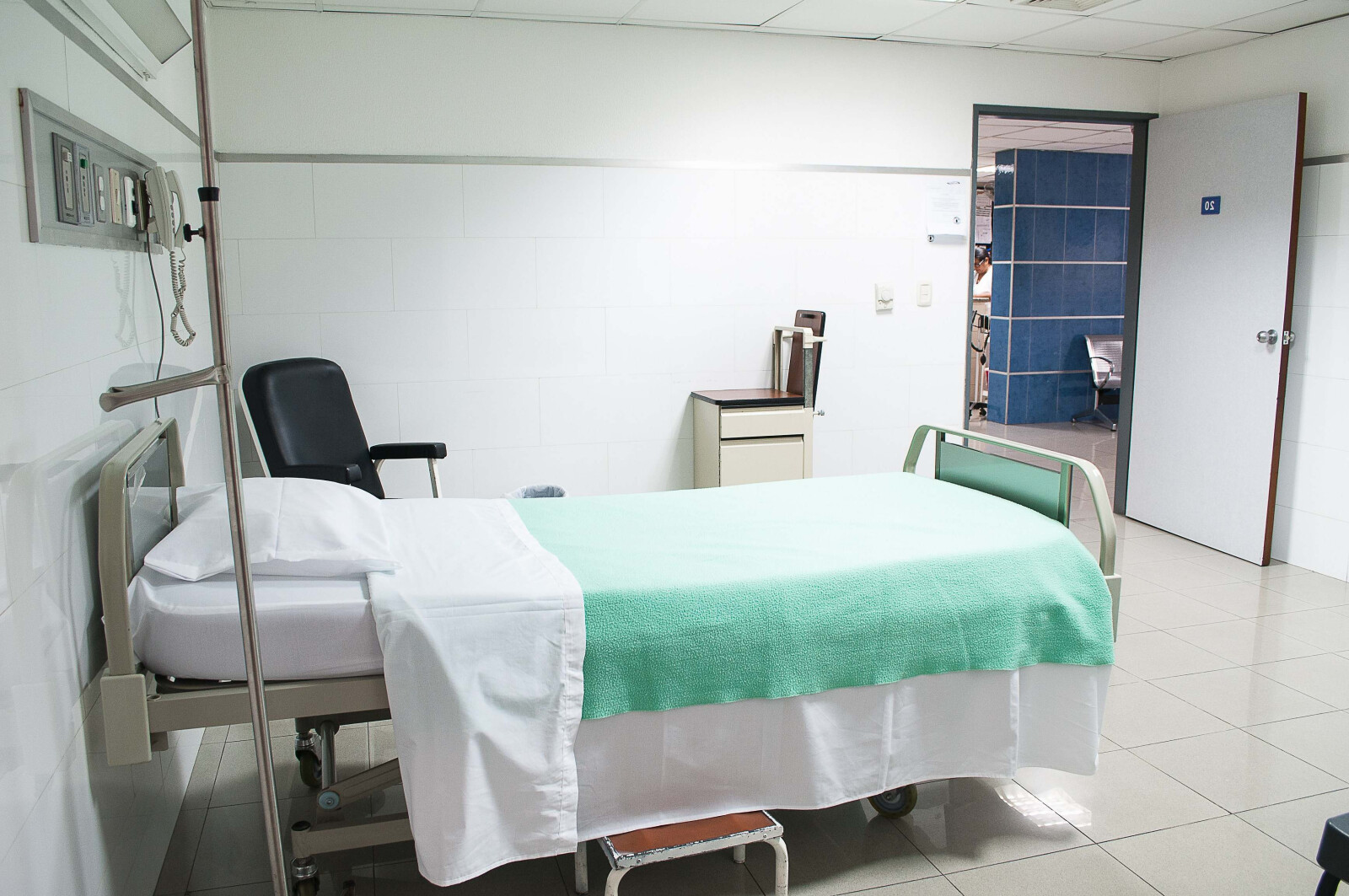Bair Hugger Warming Blankets
Unveiling the story of the Bair Hugger Warming Blanket, an indispensable medical tool and a source of controversy. From its invention by Dr. Scott D. Augustine to its broad adoption in healthcare facilities, and through the maze of litigation and safety debates. This piece offers an in-depth exploration into the device's history, utility, and future in the medical field. Embrace the warmth and controversy surrounding this widespread yet contentious surgical innovation.

Key Takeaways
- Bair Hugger warming blankets have been used on over 200 million patients since 1987 in US hospitals.
- There have been over 4,000 lawsuits filed against Bair Hugger devices, claiming infections and additional surgeries.
- 3M, the manufacturer of Bair Hugger, has launched a campaign to prove the safety of the product, citing over 170 studies and 60 clinical trials.
- An independent review found insufficient evidence to suggest that forced-air warming with Bair Hugger increases infection risk.
Understanding Bair Hugger Warming Blankets
Bair Hugger warming blankets, a critical part of Forced Air Warming (FAW) therapy, are used extensively in hospitals to maintain a patient's core body temperature during all phases of orthopedic surgery. Despite their widespread use, controversy surrounds these devices. Critics argue they may inadvertently foster bacterial growth and infection, leading to serious post-operative complications. However, their effectiveness in preventing hypothermia during surgery is well-documented. Maintaining normothermia can reduce the risk of cardiac events, wound infections, and prolonged hospital stays. Thus, while the debate continues, the majority of healthcare professionals acknowledge the substantial role Bair Hugger warming blankets play in patient care, particularly in orthopedic surgical procedures.
The Science Behind Bair Hugger Warming Blankets
Forced-air warming technology, the fundamental mechanism behind Bair Hugger warming blankets, plays a crucial role in maintaining normothermia during surgical procedures. This technology works by circulating warm air around a patient's body, effectively countering the cool environment of the operating room. The effectiveness of Bair Hugger warming blankets is widely acknowledged in medical circles, with numerous studies supporting their use in preventing hypothermia. However, potential risks associated with Bair Hugger warming blankets have been raised. Some studies suggest that they might contribute to surgical site contamination, leading to postoperative infections. Nevertheless, many healthcare professionals emphasize that with proper use and stringent infection control measures, these risks can be effectively mitigated.
The Use of Bair Hugger Warming Blankets in Medical Practices
In the realm of medical practices, the utilization of Bair Hugger warming blankets has become a common strategy in combating intraoperative hypothermia. Despite the controversy surrounding Bair Hugger warming blankets, they remain an integral part of many surgical procedures. These devices work by circulating warm air around the patient's body, helping to maintain a stable core temperature during surgery. This is crucial in preventing complications related to hypothermia, such as increased blood loss and infection. Consequently, the impact of Bair Hugger warming blankets on surgical outcomes has been largely positive, contributing to reduced recovery times and increased patient comfort. However, ongoing debates persist about potential risks, underscoring the need for continued research and patient education.
The Evolution of Bair Hugger Warming Blankets
Starting with the innovation by Dr. Scott D. Augustine in 1987, the evolution of Bair Hugger warming blankets has been marked by significant advancements and controversies over the years. These evolutionary advancements consisted of numerous technological innovations aimed at improving patient comfort and surgical outcomes. The original Bair Hugger model has undergone major transformations, leading to the development of more sophisticated models such as the 505, 750, and 775. However, this evolution was not without challenges, as the Bair Hugger system faced serious allegations of causing infections in patients. Despite these controversies, the technological innovations in Bair Hugger warming blankets have revolutionized perioperative care, playing a crucial role in maintaining patient temperature during surgery.
The Benefits of Using Bair Hugger Warming Blankets
With over 200 million patients benefiting from Bair Hugger devices since 1987, and a presence in 80% of US hospitals, the advantages of using Bair Hugger warming blankets are numerous and significant. The effectiveness of Bair Hugger warming blankets lies in their ability to maintain a patient's core body temperature during surgery, reducing the risk of hypothermia. This in turn leads to improved surgical outcomes, as a stable body temperature helps ensure optimal organ function and minimizes the risk of complications. Furthermore, the impact of Bair Hugger warming blankets on surgical outcomes is considerable. By reducing the incidence of perioperative hypothermia, these devices contribute substantially to patient safety and comfort, while also aiding the recovery process post-surgery.
Controversies and Concerns About Bair Hugger Warming Blankets
Despite the widespread use of Bair Hugger warming blankets in medical settings, concerns and controversies have arisen over potential risks and complications associated with their use. Controversial studies have suggested a possible link between the use of these blankets and an increased risk of surgical site infections. These findings, however, are disputed by other research and by the manufacturer, 3M. The legal implications of these concerns are significant, with numerous lawsuits filed against 3M, alleging injuries from infections supposedly caused by the Bair Hugger system. Despite these allegations, 3M maintains the safety and efficacy of its product, leading to an ongoing debate in the medical community about the benefits and risks of using Bair Hugger warming blankets.
The Role of Bair Hugger Warming Blankets in Patient Comfort
Bair Hugger warming blankets play a crucial role in providing comfort and maintaining optimal body temperature for patients during surgical procedures. These blankets use forced-air warming technology to facilitate thermal regulation, keeping patients at a safe and comfortable temperature throughout their surgery. The consistent, gentle heat provided by Bair Hugger blankets not only reduces the risk of hypothermia but also significantly boosts patient satisfaction by enhancing comfort. Moreover, the blankets' design enables easy adjustment as per the patient's needs, further contributing to their comfort. By maintaining the patient's body temperature and providing a warming comfort, Bair Hugger blankets directly contribute to patient satisfaction during what can be a stressful experience, such as a surgical procedure.
Bair Hugger Warming Blankets in Various Surgical Procedures
Frequently utilized in various surgical procedures, Bair Hugger warming blankets play an integral role in maintaining patient body temperature and reducing the risk of intraoperative hypothermia. Particularly in pediatric surgeries, these blankets are crucial as children are more susceptible to temperature changes due to their smaller body mass. The use of Bair Hugger warming blankets in pediatric surgeries has shown to significantly reduce postoperative complications related to hypothermia. Similarly, in cosmetic procedures, these blankets keep patients warm, helping to enhance blood flow and improve recovery outcomes. Therefore, Bair Hugger warming blankets serve as an important tool in various surgical scenarios, contributing to patient safety and comfort.
The Impact of Bair Hugger Warming Blankets on Patient Recovery
The role of thermal regulation in the postoperative recovery process is significant, with Bair Hugger warming blankets contributing notably to enhancing patient comfort and reducing potential complications. The effectiveness of Bair Hugger warming blankets in reducing postoperative complications has been demonstrated in numerous studies, leading to their widespread use in hospitals worldwide. These warming blankets have proven to aid in maintaining a stable core body temperature, reducing the risk of hypothermia, and facilitating quicker recovery. However, the controversy surrounding the use of Bair Hugger warming blankets in orthopedic surgeries has been a point of discussion. Critics argue potential infection risks, while proponents point to the blanket's proven benefits in improving patient outcomes. Despite the ongoing debate, Bair Hugger warming blankets continue to play a crucial role in postoperative patient care.
Exploring the Different Models of Bair Hugger Warming Blankets
In this section, we will delve into the various models of Bair Hugger warming blankets, and discuss their unique features and applications. The effectiveness of Bair Hugger warming blankets is well-documented across models, such as the 505, 750, and 775, each designed with specific clinical applications. Key features include adjustable temperature settings, built-in sensors for precise control, and compatibility with a range of disposable blankets. The maintenance and cleaning of Bair Hugger warming blankets are straightforward, with easily detachable components and a smooth surface that can be wiped clean. Proper maintenance ensures the longevity of these devices, reinforcing their cost-effectiveness. Despite the varied models, the underlying goal remains constant: to provide efficient, safe, and comfortable patient warming.
Bair Hugger Warming Blankets: A Revolution in Patient Care
Over the past few decades, Bair Hugger warming blankets have revolutionized patient care, providing not only comfort but also crucial temperature regulation during surgical procedures. Despite the controversy surrounding Bair Hugger warming blankets, their impact on surgical outcomes cannot be understated. The blankets have been linked to improved patient recovery rates and reduced postoperative complications. They are designed to maintain a patient's core body temperature, reducing the risk of hypothermia, a common yet dangerous side effect of anesthesia. However, these beneficial effects have been overshadowed by allegations of increased infection risks. Despite the ongoing debate, many healthcare professionals continue to advocate for their use, citing numerous studies that validate their safety and effectiveness.
Safety Measures and Precautions for Bair Hugger Warming Blankets
As we delve into the safety measures and precautions for Bair Hugger warming blankets, it is imperative to understand that these devices, like any medical equipment, require proper usage and handling to prevent potential risks. Precautions for using Bair Hugger warming blankets include ensuring they are properly set up and monitored during use. The blanket should not be in direct contact with a patient's skin, and it must be evenly distributed to ensure uniform warming. The effectiveness of Bair Hugger warming blankets in preventing hypothermia has been well-documented in medical literature. However, it is crucial to note that their effectiveness is contingent on adherence to safety measures. In case of misuse or malfunction, immediate action is necessary to mitigate risks.
Case Studies: Bair Hugger Warming Blankets in Practice
Several case studies have been conducted to evaluate the efficacy of Bair Hugger warming blankets in clinical practice, and these analyses reveal a range of outcomes. These case studies: Bair Hugger warming blankets in real life scenarios, have showcased the product's utility in maintaining patient body temperature during surgeries thus mitigating the risk of hypothermia. The effectiveness of Bair Hugger warming blankets in patient outcomes has been observed in the reduced recovery time and decreased post-operative complications. However, it's also important to note that these outcomes can vary based on individual patient conditions and the specific surgical procedures being performed. These studies underpin the value of Bair Hugger warming blankets as a significant tool in modern medical practice.
The Future of Bair Hugger Warming Blankets in Healthcare
Almost all medical professionals agree that the use of Bair Hugger warming blankets in healthcare is likely to increase in the coming years as the demand for innovative medical tools rises. The future of temperature regulation in healthcare is set to be transformed by these devices, given their proven effectiveness in maintaining patient body temperature during surgeries. Novel advancements in patient warming technology, such as those seen in Bair Hugger warming blankets, are at the forefront of this shift. The potential for these blankets to reduce surgical complications and improve patient outcomes is immense. Hence, the healthcare industry is expected to witness an increased adoption of Bair Hugger warming blankets in the near future.
The Market for Bair Hugger Warming Blankets: A Look at Competitors
While Bair Hugger warming blankets hold a significant share in the market, it's important to examine the competitive landscape to better understand their standing in the industry. The market for warming devices is diverse, with several manufacturers offering alternative warming devices. For instance, brands like HotDog and WarmTouch have gained recognition as viable competitors. These brands, like Bair Hugger, also offer patient warming solutions, but with slightly different technologies. HotDog, for instance, utilizes conductive fabric for even heat distribution. WarmTouch, on the other hand, focuses on convective warming solutions. The presence of such competitors highlights the dynamic and competitive nature of the market that Bair Hugger operates within.
Frequently Asked Questions
What Is the Cost of Bair Hugger Warming Blankets and Does Insurance Typically Cover It?
The cost of warming blankets varies depending on their efficiency and purchase options. High-grade, efficient blankets may be more expensive, but they offer better performance and longevity. Insurance coverage depends on the policy and the necessity of the blanket for medical treatment. It's advisable to consult with your insurance provider about coverage specifics. Always consider efficiency and purchase options to ensure you're making a cost-effective decision.
Are There Any Notable Side Effects or Discomforts Reported by Patients Who Have Used Bair Hugger Warming Blankets?
Patient feedback regarding the use of warming blankets during surgical procedures generally indicates high satisfaction. Notable side effects are minimal and discomfort is rarely reported. Effectiveness of these blankets in maintaining patient body temperature is widely recognized in medical practice. However, individual experiences may vary and it's crucial for medical professionals to monitor each patient's response to ensure comfort and safety during their surgical experience.
Are There Specific Clinical Settings or Medical Conditions in Which the Use of Bair Hugger Warming Blankets Is Not Recommended?
In clinical settings, certain patient conditions may necessitate the use of alternatives to standard warming methods for hypothermia prevention. Specific contraindications include patients with existing severe skin conditions or those undergoing procedures with a high risk of surgical site contamination. In such cases, alternative warming methods, which mitigate these risks, are recommended to maintain normothermia and patient comfort during surgical procedures.
What Is the Process for Cleaning and Maintaining Bair Hugger Warming Blankets to Ensure Safety and Longevity?
To ensure safety and longevity, strict cleaning and maintenance procedures are crucial for any medical equipment. Regarding blanket lifespan and cleaning techniques, a meticulous process involves regular visual inspections for wear and damage. Typically, a gentle wipe with a soft cloth and mild detergent is used for cleaning. Afterward, the equipment is thoroughly dried. This method not only helps in prolonging the lifespan of the blankets but also ensures patient safety by minimizing any risk of infection.
Besides Warming, Are There Any Other Uses of Bair Hugger Blankets in a Medical Setting?
Beyond providing warmth, Bair Hugger blankets also contribute to overall patient satisfaction and comfort during medical procedures. They can help reduce the risk of post-operative hypothermia, a common complication. Further, they aid in maintaining a patient's core body temperature, thereby enhancing blanket efficiency. This multi-functionality can lead to improved patient outcomes, increased therapeutic effectiveness, and subsequently, enhanced patient satisfaction. However, it is crucial to note that their use is subject to the specific needs and condition of the patient.
Conclusion
Thus, the Bair Hugger Warming Blanket, a paragon of medical invention, has left its warm, controversial imprint on global healthcare. Its saga, riddled with lawsuits and recall nightmares, yet buoyed by undeniably significant benefits, continues to unfurl. As we await the next plot twist, one can only hope that the blanket's future, unlike its past, will be as smooth and comforting as its warm, sterilized surface.

This post has been generated by AI and was not reviewed by editors. This is Not legal advice. Please consult with an attorney.




